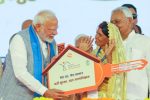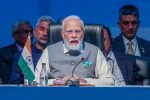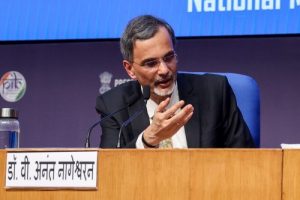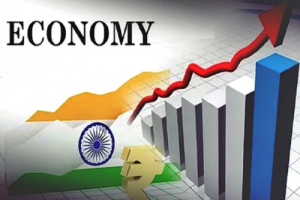The healthcare sector in India is intended to grow at a compounded Annual Growth Rate (CAGR) of 15 % to touch $158.2 billion in 2017 from $78.6 billion in 2012. Also healthcare spending in India was figured 5 % of gross domestic product (GDP) in 2013 and is anticipated to remain at that level through 2016. Total health care spending in local-currency terms is protruded to rise at an annual rate of over 12 %, from an estimated $96.3 billion in 2013 to $195.7 billion in 2018. While this speedy growth rate will bring back high inflation, it will also be repelled by increasing public and private expenditures on health.
The healthcare industry has come a long way from the situations when patients who could afford it had to go overseas; nowadays patients from many countries are constellating to India for their medical emergencies. We know medical services in India delivered via public and private sector. However the government funds apportioned to healthcare segment have always been low in relation to the population of the country simply we can say public health care system is uneven, with underfunded and overfilled hospitals and poor rural coverage.
Compromised funding by the Indian government has been ascribed to historic failures on the part of the Ministry of Health and Family Welfare (MHFW) to pay out its apportioned budget to the greatest extent. This is in spite of increasing demand, due in part, to developing incidence of age and lifestyle linked chronic disorders leading from urbanization, changing food habits and lifestyles, getting up obesity levels and far-flung tobacco products. These days India’s health care sector finds close to 50 % spend on in-patient beds for lifestyle diseases mainly urban and semi urban regions.
Furthermore, various reports shows that India has world’s highest numbers of diabetes patients and has led in the mushrooming of multi specialty hospitals to battle with lifestyle disorders. The government’s low expending on health care puts much of the load on patients, as showed by the country’s out of pocket expending rate, one of the world’s highest.
According to the World Health Organization (WHO) report, just 33 % of Indian health care expenditures in 2012 came from government sources. Of the leftover was out of pocket. At the same time the private sector of Indian healthcare segment, these facilities are run for profit. Medical facilities run by charitable organizations also provide medical services totally free or at minimal charges depending on the financial status of the patients.
Looking at Indian healthcare market in a Pan India perspective the statistics for India’s health infrastructure are very low that of other developed countries. The United States of America has 1 bed for every 350 patients while the ratio for Japan is 1 for 85. In contrast, India has 1 bed for every 1,050 patients. To meet bed availability to the criteria of more developed countries, India requires 100,000 beds this decade, at an investment of $50 billion. Also, India’s expenditure on health care information technology is also very low. Indian hospitals will require increasing their IT spending to a great extent to provide bettered and patient-centric service.
On the other side of the these facts if look at the trends of the Indian healthcare segment, over the last 40 years India has progressed a huge health infrastructure and workforce at primary, secondary and tertiary care in public, charitable and private medical centers. At present private segment range from those put up by multi specialty/ specialty corporate hospitals, nursing homes, poly clinics and clinics run by qualified medical professionals.
The major portion of the private hospitals is small medical care establishments with 85% of them having less than 25 beds capacity. Private tertiary care hospitals, furnishing specialty and multispecialty medical services, account for only 1 – 2% of the total number of institutions, while corporate medical facilities make up less than 1%. The private medical services account for 82% of all out patient (OP) and 52% of inpatient (IP) services at all India level.
In the recent past India is getting a favoured medical care destination for many countries due to low cost and good quality medical procedures giving rise to the scope for medical tourism. This leading more hospitals in the private segment advancing their medical facilities to land a share of this business. According to recent reports, India has a possibility to attract 1 million health tourists per annum, which could contribute $ 5 billion. The go on of this would be advance of medical facilities, in terms of new equipments, diagnostic procedures, equipments etc. Also health insurance which was absent earlier has currently going up in impressive manner.
Employment scenario:
Medical segment in India provides direct employment to over 10 million professionals, and opportunities going to be increase in very impressive manner; the employment opportunities are not just limited to doctors and nurses. This profession would need a good number of paramedical professionals and more importantly a large number of mid and senior level managers and with expertise across various specialties’.
According to the National Skill Development Corporation(NSDC), “By 2022, India would need 74 lakh medical service workforce” Besides, the size of the healthcare sector is anticipated to grow to Rs 9.64 lakh crore by 2017.
With many and different medical services, there are over 10 lakh allied health professionals in India in the areas of nursing associates, medical assistants, medical equipment operators, optometrists, physiotherapists, dieticians, dental assistants, and many other which is still short of the current necessitate. Also there is a significant gap in the availability of medical practitioners and it is a trend that is likely to continue for next few years. Currently India’s ratio of 0.7 doctors & 1.5 nurses per 1,000 people is dramatically lower than the WHO average of 2.5 doctors and nurses per 1,000 people. Moreover, there is an acute shortage of paramedical and administrative professionals.
There are over 7,50,000 registered Ayurveda, Yoga, Unani, Siddha and Homoeopathy practitioners in the country. These numbers, when joined with the total number of physicians shaped in allopathy, satisfy to an extent, the total requirement of medical practitioners required in the country,” NSDC predictions”.
To conclude, “India has become one of the most favoured or affordable destinations for patients looking for best healthcare care at cost much lower than that of other countries”. India can further leverage its status as a fairly priced and quality medical care provider, as result providing to a greater proportion of world population. “Therefore, there is urgency for both qualitative and quantitative skill development programs in the medical segment also policy designers and industry players need to concentrate on advancing technical skills of the clinical and non clinical medical professionals for progressed medical care services”.
Author, Gayatri Poreddy is living in India. Gayatri Poreddy is part of our authors community since
























